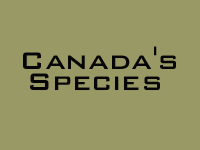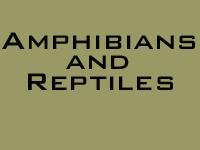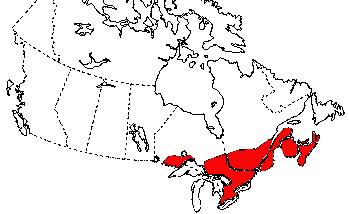
 |
 |
Eastern Newt
Notophthalmus viridescens

Eastern Newt. Photo:Joyce Gross
Relatively short, reaching up to 140mm as adults, eastern newts nevertheless make up for their diminutive stature by secreting an especially potent neurotoxin (tetrodotoxin) from their skin. In most cases, as maturity is reached, these newts adopt a terrestrial habitat for 1 to 3 years before returning to the water to breed. The marked colour changes that occur during these transitions is called 'eft'. The return to water carries with it changes in form. For example, a median fin develops above and below the tail. There are a few populations in northwestern Ontario in which there is no terrestrial phase. Due to their toxic nature, it may be best to not handle them, or if touched, to wash one's hands after doing so.

![]() Distribution
of Eastern Newt in Canada
Distribution
of Eastern Newt in Canada
